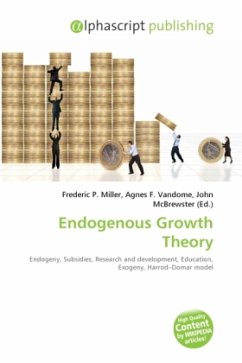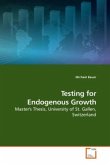High Quality Content by WIKIPEDIA articles! In economics, endogenous growth theory or new growth theory was developed in the 1980s as a response to criticism of the neo-classical growth model. The endogenous growth theory holds that policy measures can have an impact on the long-run growth rate of an economy. For example, subsidies on research and development or education increase the growth rate in some endogenous growth models by increasing the incentive to innovate. In neo-classical growth models, the long-run rate of growth is exogenously determined by either assuming a savings rate (the Harrod Domar model) or a rate of technical progress (Solow model). However, the savings rate and rate of technological progress remain unexplained. Endogenous growth theory tries to overcome this shortcoming by building macroeconomic models out of microeconomic foundations. Households are assumed to maximize utility subject to budget constraints while firms maximize profits. Crucial importance is usually given to the production of new technologies and human capital.
Bitte wählen Sie Ihr Anliegen aus.
Rechnungen
Retourenschein anfordern
Bestellstatus
Storno








